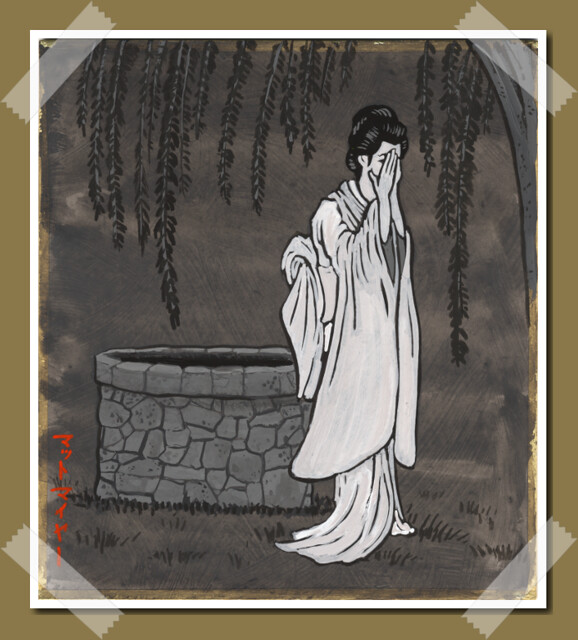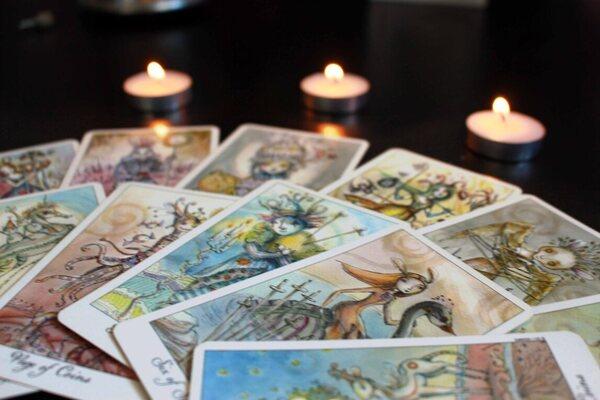Okiku

Okiku
ORIGIN:
Japan
The wealthy Aoyama family had an extremely valuable set of ten Delft (Dutch pottery) plates. Okiku, working as a maid in their home, was blamed when one plate broke or disappeared. She drowned in a well. Every night, she emerges to count plates. “One, two, three,” she intones, all the way up to nine. She can count no further, and so she dissolves into tears and wails. That’s the gist of Okiku’s tale, but there are many versions:
• She rejected the head of the family’s sexual advances. He hid one of the plates, threatening to accuse her of theft unless she had sex with him. (The accusation would bring the death penalty.) In despair, Okiku threw herself into the well.
• She really does break a plate and is thrown into the well as punishment.
• Aoyama’s wife breaks the plate but blames Okiku, who is thrown into the well.
• Okiku spilled the beans about a planned samurai rebellion. When the rebels discover who betrayed them, they torture her before throwing her into the well.
Sometimes the well is an instrument of torture as well as death: Okiku is repeatedly raised and lowered by her killer who sadistically enjoys her torment. The well is now Okiku’s home. The story of Okiku, believed to be based on historical events, was first dramatized in 1741 and has become a Ka buki staple. (The traditional Kabuki play is called Bancho Sarayashiki or “The Broken Dishes at Bancho Mansion.”) Okiku is the subject of several novels and movies. Hokusai and Yoshitoshi Tsukioka are among artists who have created portraits of her.
Okiku’s ghost is the inspiration for the Ring series of novels and movies (and basically for the whole horror genre of ghost-women climbing out of wells to torment the living.)
• Shouting “ten!” after Okiku counts “nine” but before she can start wailing will disarm her. Reports say she will vanish on the spot.
• In 1795, Japan suffered an infestation of worms found in old wells. The worm, naturally covered with thin threads so that it appeared bound, was nicknamed Okiku Mushi or “Okiku bug.” It was widely considered an incarnation of Okiku or her curse.
SACRED SITES:
Different sites claim to be the location of her well including Himeji Castle, now a tourist destination where apparitions of Okiku are still allegedly witnessed and the garden of the Canadian embassy in Tokyo, which is on land purchased from the Aoyama family.
SEE ALSO:
- Obake
- Oiwa
- Onryo
- Yurei
Encyclopedia of Spirits: The Ultimate Guide to the Magic of Fairies, Genies, Demons, Ghosts, Gods & Goddesses – Written by Judika Illes Copyright © 2009 by Judika Illes.








